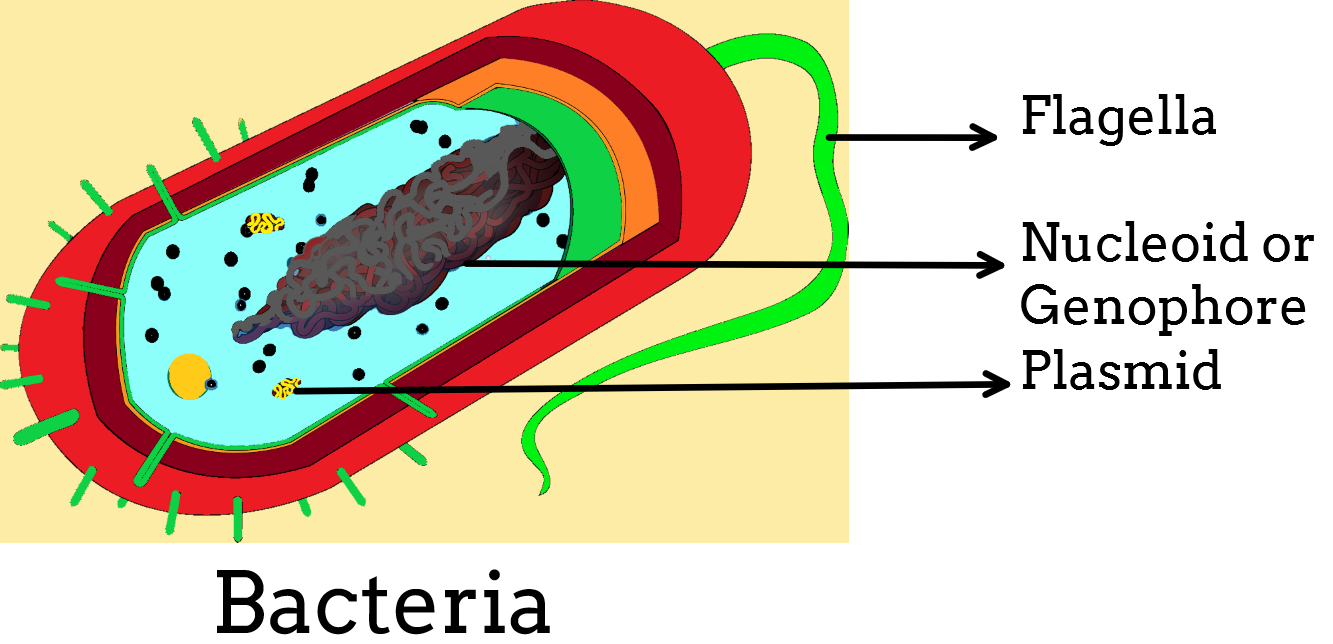
A cell without an organized nucleus is called as
(a)Prokaryotic cells
(b)Eukaryotic cell
(c)Both a and b
(d)None of the above
Answer
506.1k+ views
Hint: Examples of this cell are bacteria and Archaea. These contain appendages like flagella, pili, and fiber used as the locomotory organ or to capture food. They have a cell envelope containing glycocalyx in either capsule or slime layer.
Complete answer:
Prokaryotic cells have a primitive nucleus that means the nucleus is not surrounded by the nuclear membrane. Prokaryotes contain a circular loop of DNA without non- coding regions. These are devoid of the nuclear envelope thusDNA of the cell aggregates in a dense area of the cell known as the nucleoid.
Additional Information:
-The prokaryotic cells have cell envelopes and cell membranes made up of peptidoglycan.
-Based on the cell wall composition Hans Christian Gram divides the bacteria into two types- gram-positive and gram-negative.
-Prokaryotic cells contra extracellular material known as plasmids.
-Prokaryotic cells have 70s ribosomes which consist of small subunit 30s and large subunit 50s.

So, the correct answer is, ‘ prokaryotic cells.’
Note: -Gram-positive cells have many layers of peptidoglycan and teichoic acids and when stained form crystal violet- teichoic acid complex.
-Gram-negative cells have a very little amount of peptidoglycans and teichoic acid.
-Gram non reactive cells are those cells that have peptidoglycan but very waxy thick lipids waterproof, thus dyes cannot enter either. Examples- Mycobacterium tuberculosis and leprosy.
Complete answer:
Prokaryotic cells have a primitive nucleus that means the nucleus is not surrounded by the nuclear membrane. Prokaryotes contain a circular loop of DNA without non- coding regions. These are devoid of the nuclear envelope thusDNA of the cell aggregates in a dense area of the cell known as the nucleoid.
Additional Information:
-The prokaryotic cells have cell envelopes and cell membranes made up of peptidoglycan.
-Based on the cell wall composition Hans Christian Gram divides the bacteria into two types- gram-positive and gram-negative.
-Prokaryotic cells contra extracellular material known as plasmids.
-Prokaryotic cells have 70s ribosomes which consist of small subunit 30s and large subunit 50s.

So, the correct answer is, ‘ prokaryotic cells.’
Note: -Gram-positive cells have many layers of peptidoglycan and teichoic acids and when stained form crystal violet- teichoic acid complex.
-Gram-negative cells have a very little amount of peptidoglycans and teichoic acid.
-Gram non reactive cells are those cells that have peptidoglycan but very waxy thick lipids waterproof, thus dyes cannot enter either. Examples- Mycobacterium tuberculosis and leprosy.
Recently Updated Pages
Master Class 11 Business Studies: Engaging Questions & Answers for Success

Master Class 11 Accountancy: Engaging Questions & Answers for Success

Master Class 11 Computer Science: Engaging Questions & Answers for Success

Master Class 11 English: Engaging Questions & Answers for Success

Master Class 11 Social Science: Engaging Questions & Answers for Success

Master Class 11 Economics: Engaging Questions & Answers for Success

Trending doubts
Which one is a true fish A Jellyfish B Starfish C Dogfish class 11 biology CBSE

State and prove Bernoullis theorem class 11 physics CBSE

1 ton equals to A 100 kg B 1000 kg C 10 kg D 10000 class 11 physics CBSE

In which part of the body the blood is purified oxygenation class 11 biology CBSE

One Metric ton is equal to kg A 10000 B 1000 C 100 class 11 physics CBSE

Difference Between Prokaryotic Cells and Eukaryotic Cells




